The fabulous world of Japanese ingredients
From seasonal fruits and vegetables, picked at specific times of day, to local seafood found only at exact depths, seasons and locations, Japanese ingredients are bound to their specific heritage and the landscape on which they were raised. This singularity is reflected in a cuisine where each element on a plate tells the story of where and how it was produced.
“I believe every country has ingredients that are indigenous to their culture or surroundings. They are not necessarily better or superior than Japanese. They are just different. Outside of Japan, you do have individuals who also take pride in their work and craft to provide, produce, harvest products to the highest level, with the same philosophy as the Japanese culture—a deep understanding of their ingredients and tradition passed from generation to generation. This unfortunately is diminishing slowly worldwide.”
– outlines Cesar Ramirez, former chef of three-Michelin starred Brooklyn Fair, (and—insider alert—opening his own restaurant in NYC this autumn). In Japan, these traditions and respect for individuality continues to thrive, with systems such as the relevantly recently introduced Geographical Indication label, reinforcing the pride of place associated with each product.
“I believe ingredients in Japan are amazing because they are picked at their peak of each season with the utmost respect and care of how they can be used and eaten.” He concludes.
Here we take a deep dive into some of the lesser known prized Japanese ingredients, fruit, tea, some 1,200 year-old cattle beef and some very select seafood. Each a product a reflection, an embodiment of the cultural heritage of the producers and the unique landscape, which provides the flavours, textures and colours:
“I think the extreme seasons, from snow to beautiful sunshine, provide the contrast needed for these ingredients to grow. If I were to choose some favourites, I would select delicate onions, sweetcorn and ALL of the Ebi (Japanese shrimp).”
Daniel Calvert, chef of two-Michelin starred restaurant Sezanne, in Tokyo, tells Luxeat. “I think water plays a huge part in Japanese ingredients”, he adds “like fruit, vegetables, rice and fish from the lakes and rivers.”
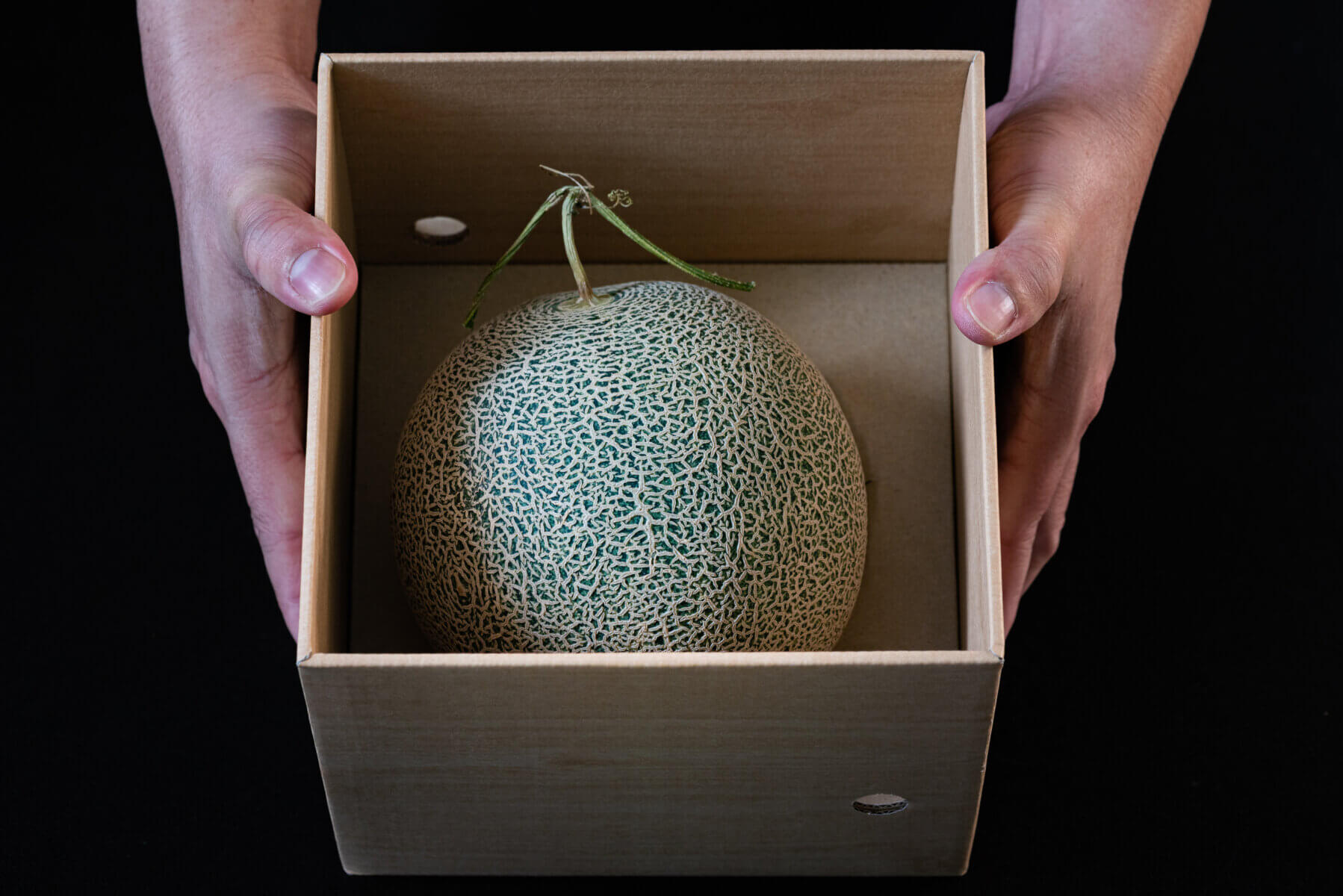
Yubari Melon: The Crown Jewel of Hokkaido
Boasting an elegant oval shape and adorned with a distinctive ‘net’ pattern, the Yubari Melon, from Hokkaido, has a weight range of 1.0 to 2.5 kilograms. Its flesh, a vibrant shade of orange, is remarkably tender and exceptionally juicy. Yubari City’s unique geographic location, nestled among mountains and hills, bestows upon these melons a climatic journey, with substantial day and night temperature fluctuations, that enhances their flavour profile. The ripening season, spanning from June to July, experiences temperature gaps exceeding 10℃, yet rainfall remains limited. These conditions alongside the soil in which they grow, which is enriched with volcanic ash from the Tarumae volcano, plays a pivotal role in crafting their distinctive aroma, succulent pulp, and elevated sugar content, owing to its excellent drainage characteristics.
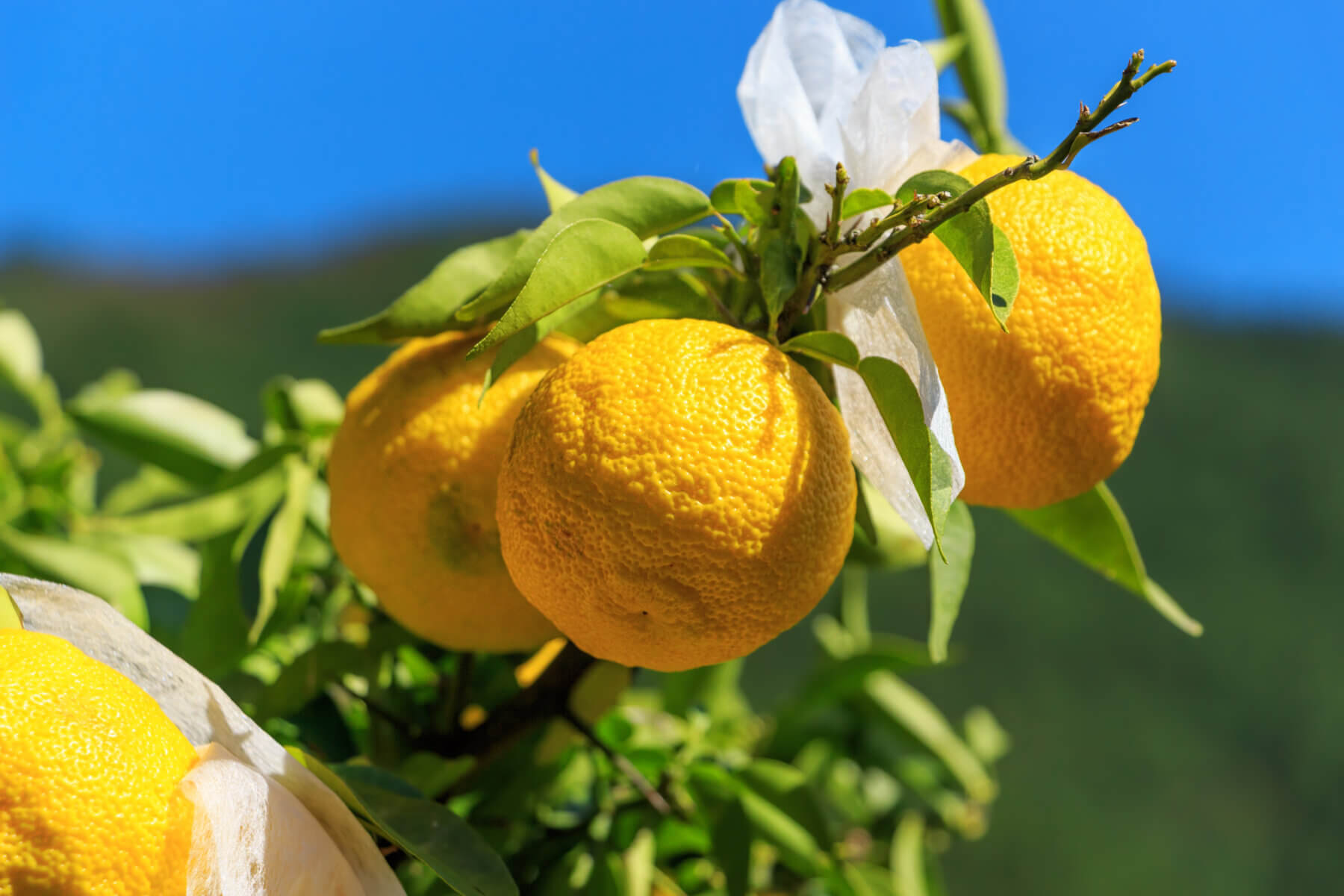
Kito Yuzu: A Zesty Tale from Tokushima
The tale of Kito Yuzu, a citrus fruit hailing from Naka Town in Tokushima Prefecture, starts in 1960 when a group from Kito Village took the bold step of introducing these zesty treasures to the Osaka Central Market. Receiving an enthusiastic reception, this initiative prompted the region to initiate seedling cultivation for varietal selection from 1961, leading to the widespread production of Kito Yuzu across the towns and villages within the Naka River watershed. Today these fruits are cultivated in accordance with rigorous standards established by a local producers’ group, adhering to the meticulous breeding of indigenous yuzu varieties, native to the region.
Naka Town’s exceptional geography, surrounded by towering mountains with elevations exceeding 1,000 metres, provides an ideal environment for cultivating yuzu known for their vivid colour, fragrant aroma, and resistance to disease. Today, these highly acidic yuzu fruits contribute their unique flavour-enhancing properties to cuisine, earning them a cherished status in Tokushima.
Distinguished by its robust peel that resists damage and provides an unblemished exterior, the Kito Yuzu is highly regarded not only in local markets in Japan but also in the European Union. Only fruits with a diameter exceeding 4 cm and devoid of any scratches or punctures are selected for distribution to greengrocers or export.
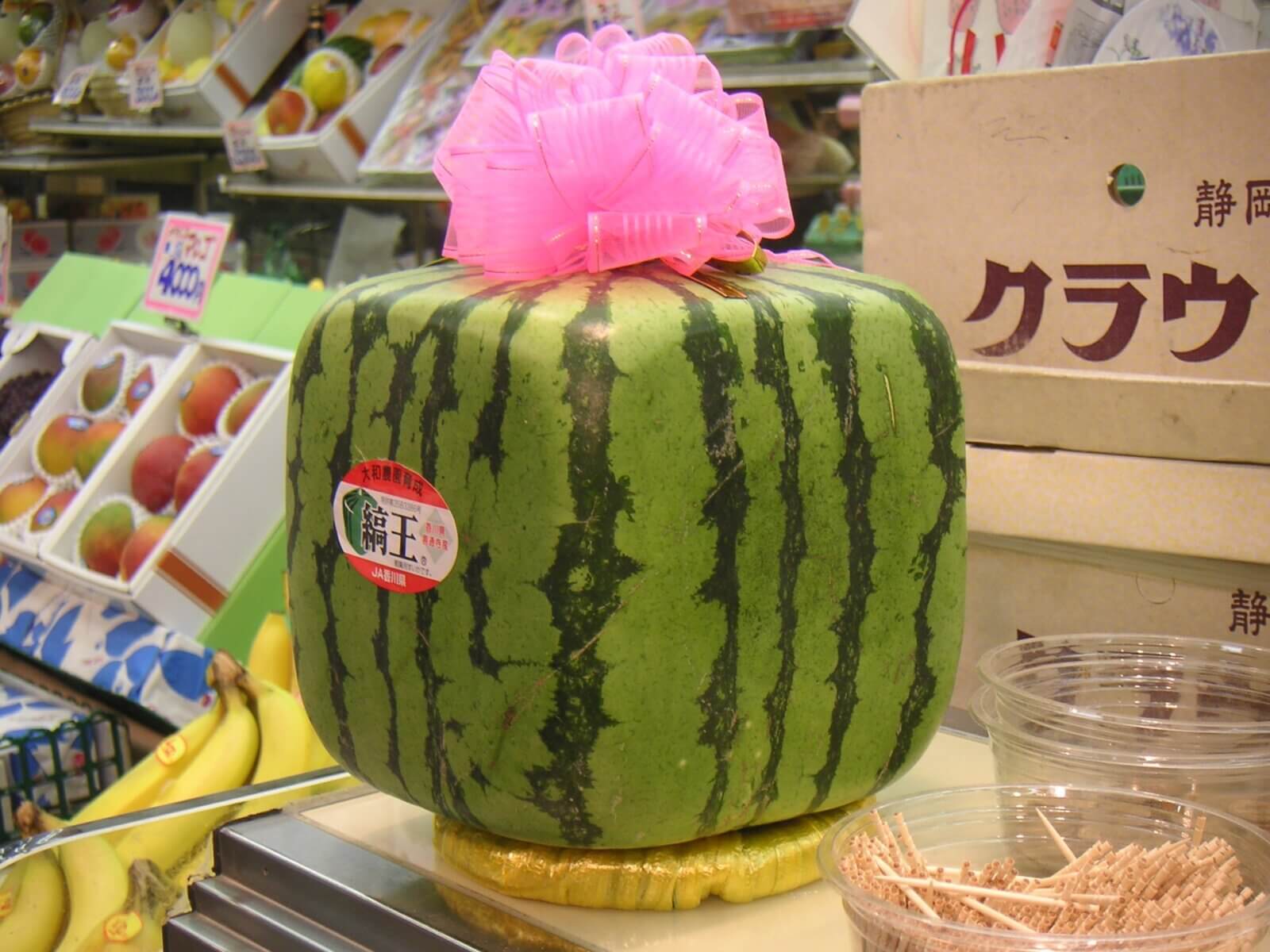
Zentsujisan Shikakusuika: Cubes of Juicy Innovation
The cubic watermelon, known as Zentsujisan Shikakusuika, originating from Zentsuji City, stands as a distinct departure from the familiar round watermelon. It features a meticulously patterned skin with neat, vertically aligned stripes, imparting a striking visual allure akin to a work of art.
These singular watermelons are a testament to the art of selective breeding, utilising the Shimao variety as their foundational muse. Only the most superior specimens are selected for cultivation within cubic containers, meticulously preserving their iconic cubic shape. And with nine producers ensuring the annual harvest of only approximately 500 of these cubic marvels, they are both rare and accordingly expensive, with export retail prices ranging from 200 to 800 dollars per fruit.
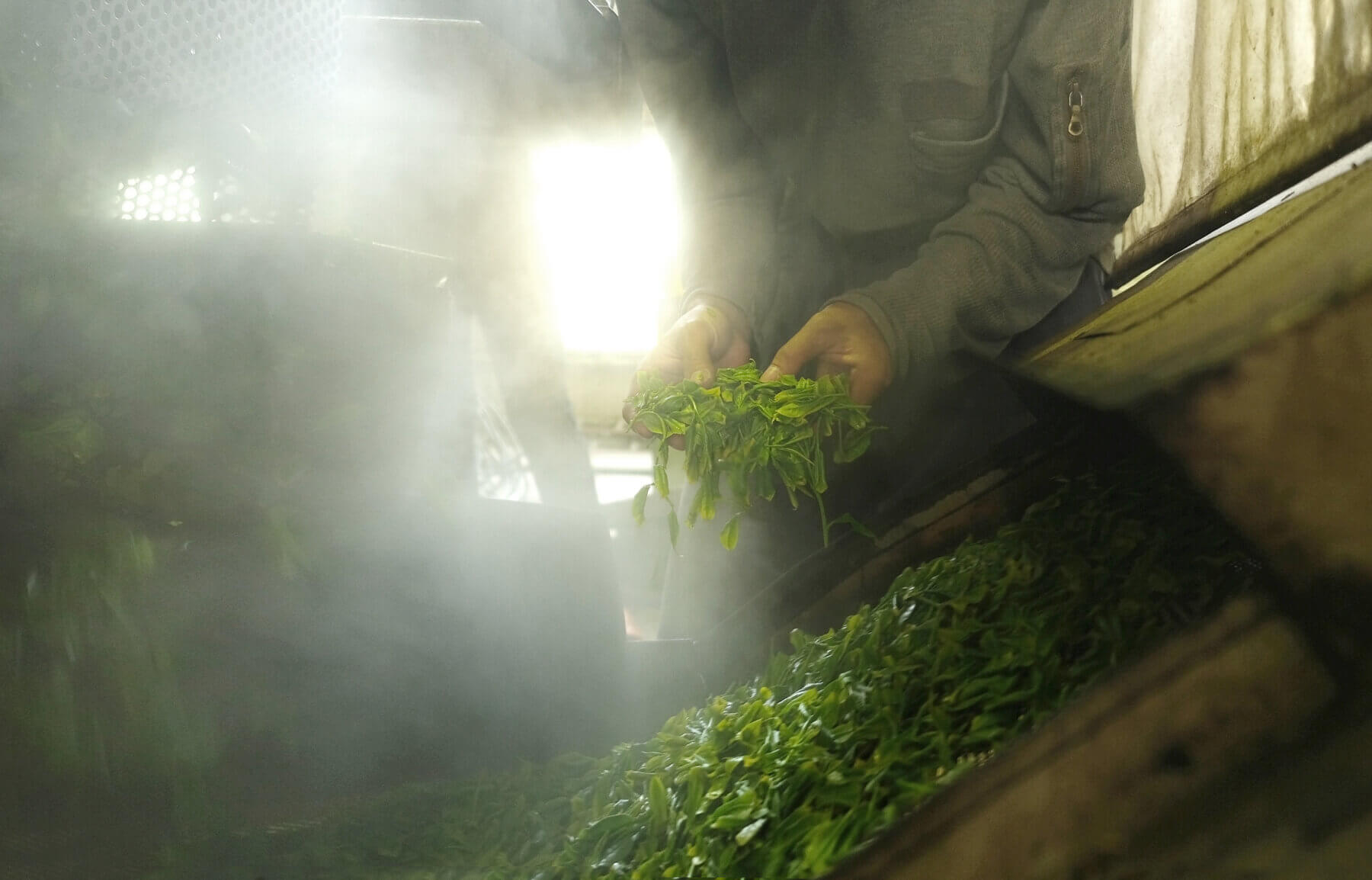
Yame Tea: The Taste of Tradition
In the tranquil landscapes of Yame City and its semi-mountainous terrain, characterised by morning fog, the story of Yame Japanese tea unfolds. Cultivated with hand-picked leaves nurtured through time-honoured techniques, including the use of natural rice straw covers instead of synthetic materials, this traditional beverage serves as a testament to the artistry of tea production. Renowned for its distinctive green, laver-like aroma, often referred to as the “blanket scent”, Yama tea boasts over five times the aromatic components of other tea types such as Sencha from the same region and twice the Gyokuro standard. The tea’s secret lies in its abundance of the amino acid theanine, a savoury element that tempers astringent catechins, resulting in a brew that is thick and mellow.
The origin of Yame’s tea heritage can be traced back to 1423 when a Zen priest founded Reigan-ji Temple in Kasahara, Kuroki town, Yame City. This forward-thinking priest introduced tea seeds from the Ming Dynasty and began teaching the art of tea-making. The art of tea processing in Yame has been refined across generations. Young enthusiasts participate in competitions and workshops in “Hand rolling,” a fundamental aspect of crude tea processing, rooted in the tradition of passing down knowledge and techniques.
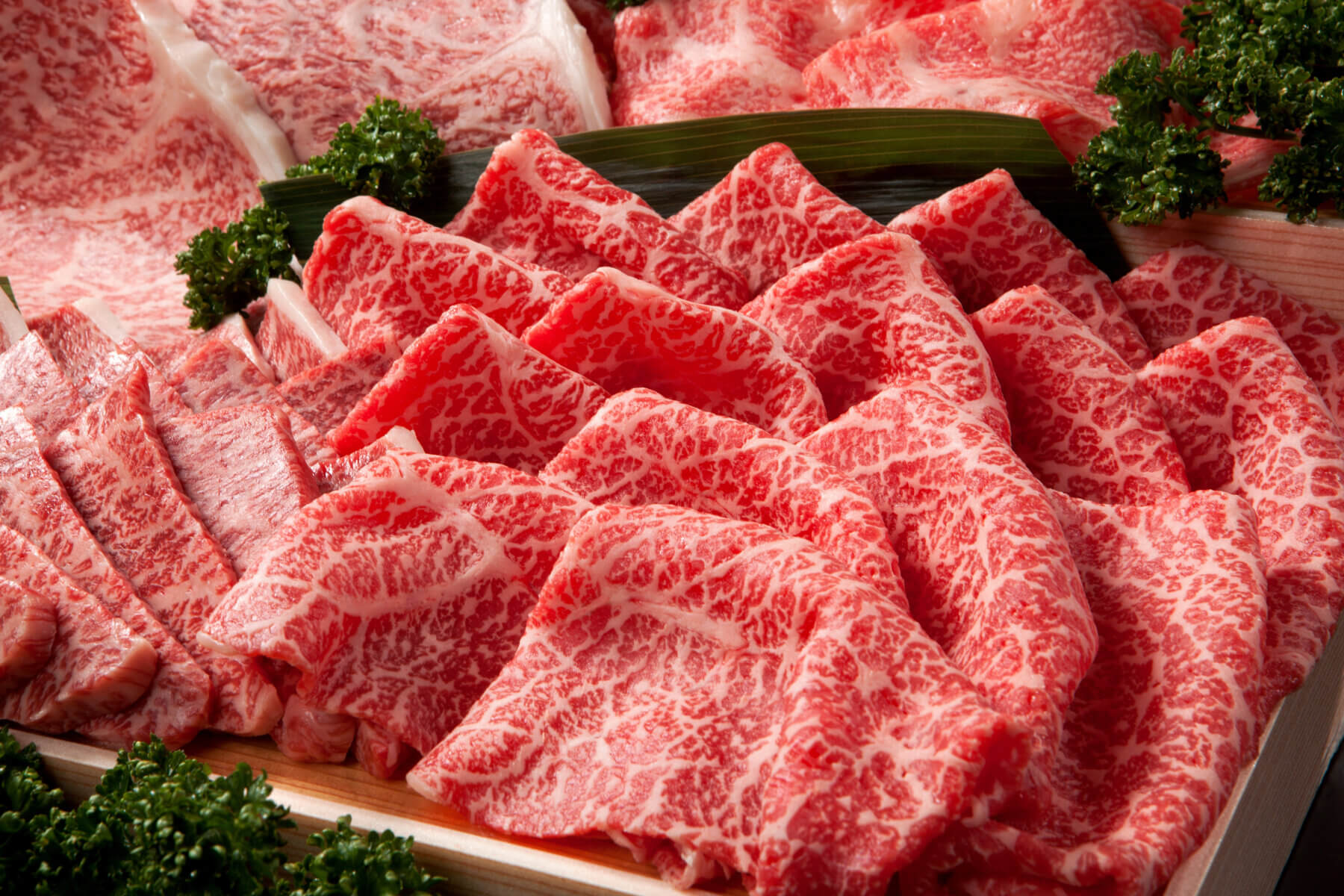
Tajima Beef: A Slice of Hyogo’s Culinary Legacy
In the heartland of Hyogo Prefecture, Tajima cattle has quietly thrived for over 1,200 years. Sourced from Tajima cattle, which have resided in the mountains of Tajima in northern Hyogo Prefecture for centuries, thriving in a pristine natural environment with pure streams, clear air, and abundant mountain grass. Their thin, elastic skin, soft downy hair, and taut muscles result from generations of careful breeding. The meat itself is a harmonious blend of taste, marbling, and tenderness, with thinner bones and less subcutaneous fat, making it a choice for connoisseurs.
Tajima Beef’s international acclaim started with the opening of Yokohama and Kobe ports in the late 19th century. Foreign visitors to Japan were captivated by its exquisite flavour, leading to the establishment of “beef hotpot shops” and its inclusion in dishes like Sukiyaki – where meat is slowly cooked or simmered at the table, alongside vegetables and other ingredients, in a shallow iron pot. Today, Tajima Beef is a symbol of Hyogo Prefecture’s enduring legacy.
Select Seafood : Iwate Nodamura Araumi Hotate and Toyoshima Tachiuo: Culinary Treasures from Japan’s Pristine Waters
When asked to select his favourite Japanese ingredients for Luxeat, Sushi Master Tiago Cardoso da Silva doesn’t hesitate to turn to the sea’s riches: “To talk about unique Japanese ingredients is something that could be done so extensively that it becomes difficult to choose a couple of real special ones. But some are like no other in the world, “Murasaki Uni” or purple sea urchin from Hokkaido, from the Kombu rich region of Hakodate and “Nodoguro” or black throat sea perch from Tsushima island. The unique sweetness of this special sea urchin together with the nuttiness and creamy fluffy texture made it one of the most sought after ingredients in the world. After you have tried the best there, you will never forget the experience. Nodoguro is a fish native to Japan and Korea but the best are known to be found around Tsushima island, a fish with pristine white meat and amazing fat content that gives a luscious mouthfeel and the ultimate fish taste. For me these are unique ingredients from Japan that left an impression on me that will last forever.“
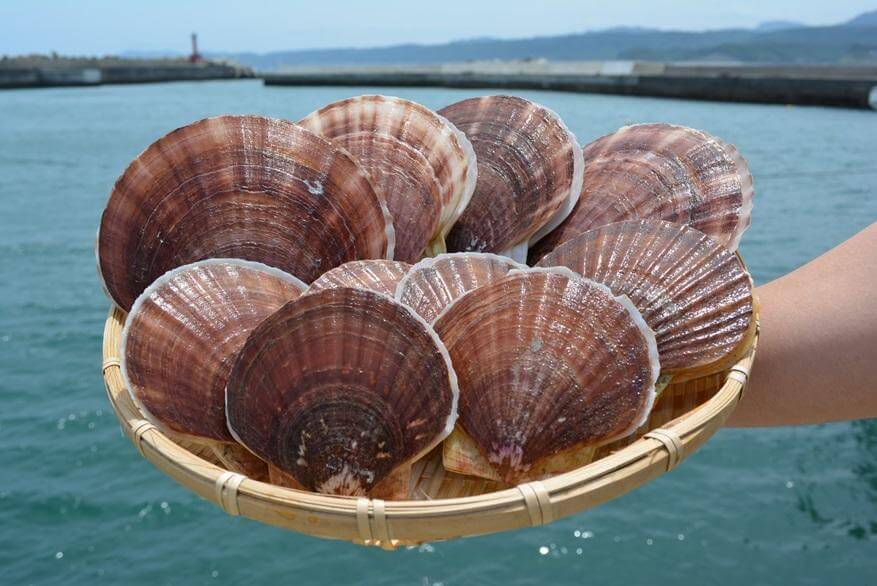
Iwate Nodamura Araumi Hotate
The free-roaming scallops from Noda Bay on the northern Sanriku Coast benefit from the convergence of cold Oyashio Current and warm Kuroshio and Tsugaru Warm Currents. This natural mixer enriches the scallops’ diet with an abundance of plankton, enhancing their flavour. The bay’s large open waters ensure a consistent influx of fresh seawater, vital for scallop farming. Known for their meaty flesh and lasting texture, they thrive due to low-density cultivation, developing firm adductor muscles and elasticity. Their smooth, beautiful shells set them apart in appearance and are esteemed by connoisseurs, enjoyed raw, baked, grilled, boiled, or steamed.
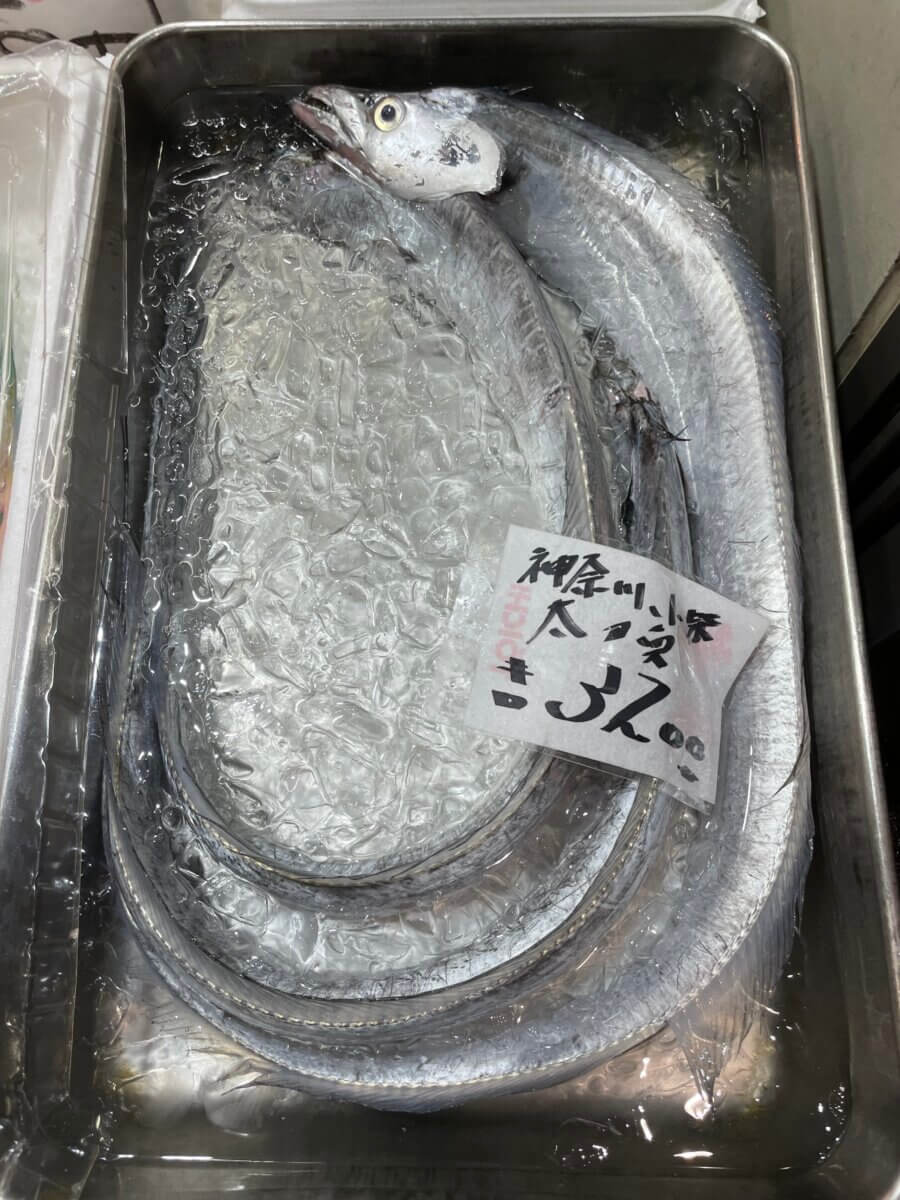
Toyoshima Tachiuo
Hailing from Toyoshima, in the Hiroshima Prefecture, the “Toyoshima Tachiuo” cutlass fish showcases exceptional freshness and unblemished skin. Each fish is meticulously caught using trolling techniques to minimise damage, sorted by size, and instantly chilled with ice for utmost freshness. And undoubtedly slain using the Ikejime method of inserting a spike into the fish’s hindbrain and spinal cord, preventing muscle movement and thus enhancing flavour and quality.
The seas off Toyoshima provide a rich fishing ground with tides of varying extremity, teeming with Japanese sand lance and small fish—an ideal cutlass fish diet. The art of cutlass fish fishing in the region began in the 1950s and continues to evolve.
That wraps up our 2023 selection of Japanese ingredients picks, where each bite conveys a story of painstaking cultivation, and allows one to experience a palette enriched with high mountains and deep rivers.
Over the last seven years, Japan has officialised their effort to protect, acknowledge and value the uniqueness to their regions’ bounty by establishing the Geographical Indication framework, on which many of the previously mentioned ingredients are listed. Read more about this here.
References:
Alcohol export, About GI, The list of GI ingredients, Scallops, Tachiuo, Tajima, Yame Gyokuro, Tea, Yubari melon, Square watermelon, Yuzu.